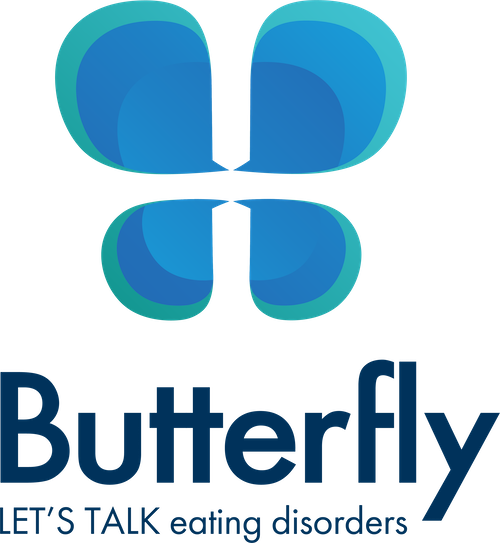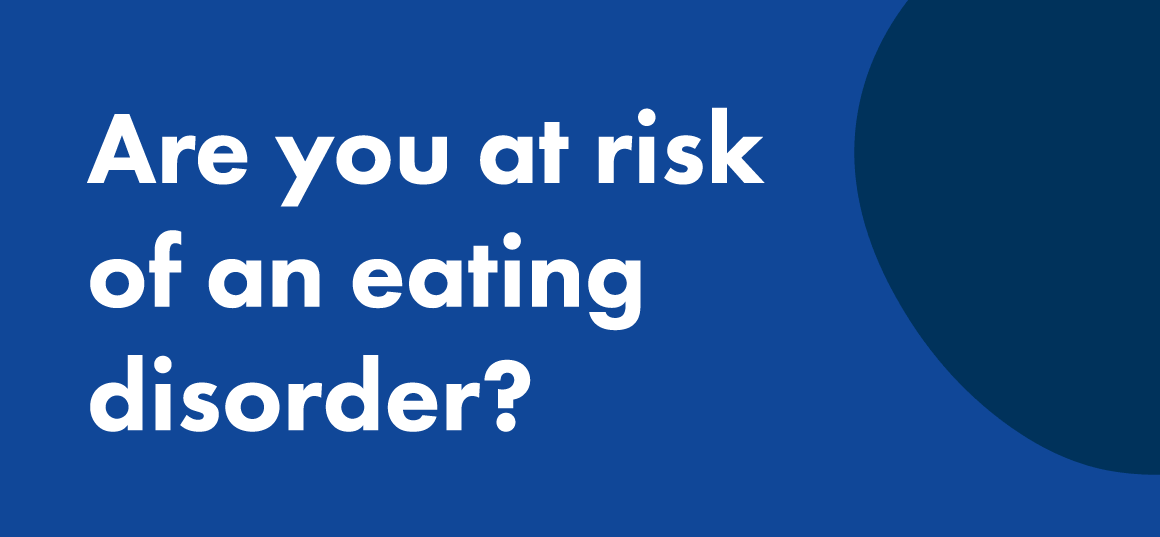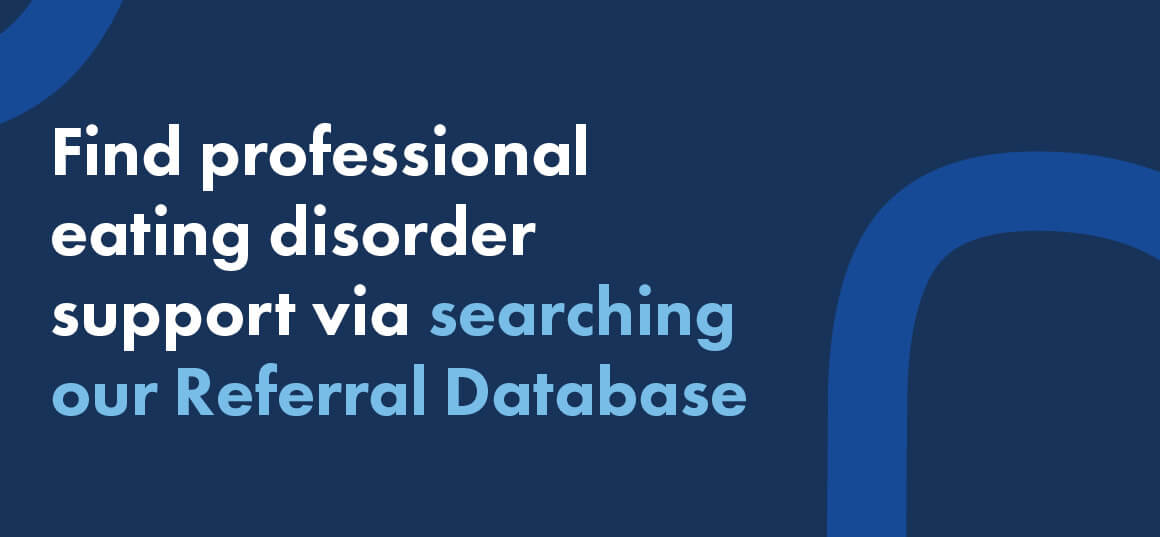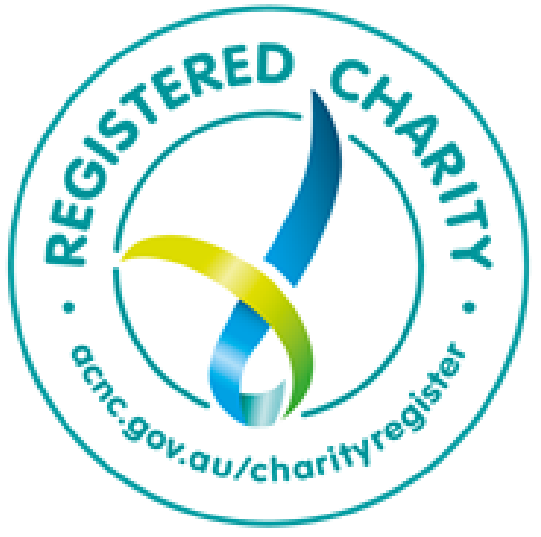Risks and warning signs
The factors that contribute to the onset of an eating disorder are complex. No single cause of eating disorders has been identified however known contributing risk factors include:
Genetic vulnerability
There is strong evidence that eating disorders have a genetic basis.
The genes that are most implicated in passing on eating disorders are within biological systems that relate to food intake, appetite, metabolism, mood, and reward-pleasure responses. It has been shown that this genetic influence is not simply due to the inheritance of any one gene but results from a much more complicated interaction between many genes and quite possibly non inherited genetic factors as well.
The biological causes of eating disorders are not well understood. This could be because the majority of studies are conducted during the acute or recovery phase of an eating disorder. At this time, there are physiological changes occurring in the person as a result of their eating disorder behaviours which can affect the findings of the studies. Studies conducted at the onset of an eating disorder could show different results.
Psychological factors
Research into Anorexia Nervosa and Bulimia Nervosa specifically has identified a number of personality traits that may be present before, during, and after recovery from an eating disorder.
These include:
- Perfectionism
- Obsessive-compulsiveness
- Neuroticism
- Negative emotionality
- Harm avoidance
- Core low self-esteem
- Traits associated with avoidant personality disorder
Specific additional personality traits may be associated with each type of eating disorder. It is also important to include that prolonged starvation induces change in cognition, behaviour, and interpersonal characteristics. It can therefore be difficult to discern the psychological causes from the psychological effects of eating disorders.
Socio-cultural influences
Evidence shows that socio-cultural influences play a role in the development of eating disorders, particularly among people who internalise the Western beauty ideal of thinness. Images communicated through mass media such as television, magazines and advertising are unrealistic, airbrushed and altered to achieve a culturally perceived image of ‘perfection’ that does not actually exist.
The most predominant images in our culture today suggest that beauty is equated with thinness for females and a lean, muscular body for males. People who internalise this ‘thin ideal’ have a greater risk of developing body dissatisfaction which can lead to eating disorder behaviours.
Like most other psychiatric illnesses and health conditions, a combination of several different factors may increase the likelihood that a person will experience an eating disorder at some point in their life.
Modifiable Risk Factors
It is possible to change some socio-cultural, psychological and environmental risk factors. The modifiable risk factors for eating disorders are identified as:
Low self-esteem
Low self-esteem has been identified by many research studies as a general risk factor for the development of eating disorders. Strong self-esteem has been described as essential for psychological well-being and for strengthening the ability to resist cultural pressures.
Body dissatisfaction
Poor body image can contribute to impaired mental and physical health, lower social functionality and poor lifestyle choices. Body dissatisfaction, the experience of feelings of shame, sadness or anger associated with the body, can lead to extreme weight control behaviours and is a leading risk factor for the development of eating disorders.
Body dissatisfaction is also linked to depression and low self-esteem and has been found to be widespread in adolescent girls and boys in Australia.
Internalisation of the thin socio-cultural ideal
People who internalise and adopt the Western beauty ideal of thinness as a personal standard have a higher risk of developing an eating disorder.
Extreme weight loss behaviours
Disordered Eating
Disordered eating is the single most important indicator of onset of an eating disorder. Disordered eating is a disturbed pattern of eating that can include fasting and skipping meals, eliminating food groups, restrictive dieting accompanied by binge eating and excessive exercise. Disordered eating can also include purging behaviours such as laxative abuse and self-induced vomiting.
Disordered eating can result in significant mental, physical and social impairment and is associated with not only eating disorders but also health concerns such as depression, anxiety, nutritional and metabolic problems and weight gain.
Dieting
While moderate changes in diet and exercise have been shown to be safe, significant mental and physical consequences may occur with extreme or unhealthy dieting practices.
Dieting is associated with the development of eating disorders. It is also associated with other health concerns including depression, anxiety, nutritional and metabolic problems, and, contrary to expectation, with an increase in weight.
Dieting and Adolescents at Risk
Puberty is a time of great change biologically, physically and psychologically. Teenagers are often vulnerable to societal pressures and can often feel insecure and self conscious, factors that increase the risk of engaging in extreme dieting behaviour.
The act of starting any diet increases the risk of eating disorders in adolescent girls and boys. Research shows that young people who engage in unhealthy dieting practices are almost three times as likely as their healthy-dieting peers to score high on measures assessing suicide risk.
Studies in Australia and New Zealand have found:
- Approximately half of adolescent girls have tried to lose weight and practise extreme weight loss behaviours such as fasting, self-induced vomiting and smoking
- As many as 75% of high school girls feel fat or want to lose weight
- Young people who diet moderately are five times more likely to develop an eating disorder; those who are severe dieters have an 18-fold risk
- Among girls who dieted, the risk of obesity is greater than for non-dieters
- 27% of individuals with an eating disorder are aged 19 years or younger (Paying the Price 2024)
Warning signs
People who suffer from an eating disorder may display a combination of symptoms or they can show only one symptom. In some cases, they may not show any signs or symptoms at all.
They may also make significant efforts to conceal their behaviour or they may not even recognise that there is anything wrong or that their eating habits have become ‘disordered’. For a carer, this can make the warning signs more difficult to identify.
Below are some of the most common warning signs and symptoms that you should be aware of in regards to eating disorders. However, it should be noted that not all of these symptoms will be indicative of an eating disorder and that someone suffering from an eating disorder may not display all, or even any, of these signs.
Thank you to NEDC for this resource.
-
Rapid weight loss or frequent weight changes
-
Loss or disturbance of menstruation
-
decreased libido
-
Fainting or dizziness
-
Feeling tired and not sleeping well
-
Lethargy and low energy
-
Signs of damage due to vomiting including swelling around the cheeks or jaw, calluses on knuckles, damage to teeth and bad breath
-
Feeling cold most of the time, even in warm weather
Psychological warning signs can be difficult to detect in anyone suffering from an eating disorder. They usually only come to light through changes in behaviour or through discussion and conversation.
-
Preoccupation with eating, food, body shape and weight
-
Feeling anxious and or irritable around meal times
-
Feeling ‘out of control’ around food
-
‘Black and white’ thinking (e.g. rigid thoughts about food being ‘good’ or ‘bad’)
-
A distorted body image
-
Using food as a source of comfort (e.g. eating as a way to deal with boredom, stress or depression)
-
Using food as self-punishment (e.g. refusing to eat due to depression, stress or other emotional reasons)
Behavioural symptoms are commonly present in those with eating disorders. While you may recognise some of these symptoms in someone you care about, these signs can still be concealed and may be difficult to detect.
-
Dieting behaviour (e.g. fasting, counting calories/kilojoules, avoiding food groups such as fats and carbohydrates)
-
Eating in private and avoiding meals with other people
-
Evidence of binge eating (e.g. disappearance and/or hoarding of food)
-
Frequent trips to the bathroom during or shortly after meals
-
Vomiting or using laxatives, enemas, appetite suppressants or diuretics
-
Changes in clothing style (e.g. wearing baggy clothes)
-
Compulsive or excessive exercising (e.g. exercising in bad weather, continuing to exercise when sick or injured, and experiencing distress if exercise is not possible)
-
Changes in food preferences (e.g. claiming to dislike foods previously enjoyed, sudden preoccupation with ‘healthy eating’, or replacing meals with fluids)
-
Obsessive rituals around food preparation and eating (e.g. eating very slowly, cutting food into very small pieces, insisting that meals are served at exactly the same time every day)
-
Extreme sensitivity to comments about body shape, weight, eating and exercise habits
-
Secretive behaviour around food (e.g. saying they have eaten when they haven’t, hiding uneaten food in their rooms)





















